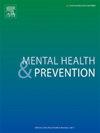Promoting teaching and non-teaching school staff resilience post-COVID pandemic
IF 2.4
Q2 Medicine
引用次数: 0
Abstract
Objective
School-based professional development interventions are hopeful mechanisms for promoting teacher/staff mental health and resilience. This study aimed to examine changes in key contributors to mental health and resilience of North Carolina (United States) teaching and non-teaching staff working in school districts that volunteered to participate in the Cultivating Awareness and Resilience in Education (CARE) professional development program.
Methods
This prospective cohort study assessed school staff resilience before, one week after, and 2 months after the CARE program, using the Teachers’ Sense of Efficacy Scale, Maslach Burnout Inventory, Generalized Anxiety Disorder-7; Patient Health Questionnaire 8; Perceived Stress Scale, and Experiences with the CARE for Teachers and Staff Professional Development Program.
Results
Fifty-three participants were included (70 % teachers, 79 % female, 77 % White, 47 % high school, 47 % elementary school). Across all participants, improvements were observed at one week and two months post-intervention in overall sense of efficacy (mean difference [MD] 0.92; 95 % CI, 0.50–1.38 and MD 0.78; 95 % CI, 0.32–1.26, respectively); emotional exhaustion (MD -5.84; 95 % CI, -10.93 to -0.72 and MD -6.59; 95 % CI, -11.79 to -0.29, respectively); anxiety (MD -3.59; 95 % CI, -6.21 to -0.76 and MD -3.27; 95 % CI, -5.83 to -0.71, respectively); and depression (MD -3.64; 95 % CI, -6.17 to -0.78 and MD -3.19; 95 % CI, -5.73 to -0.63, respectively). Teachers’ perceived stress was lower at one week post-intervention (MD -1.59; 95 % CI, -3.03 to -0.12.)
Conclusion
Findings demonstrate improvements in participants’ sense of self-efficacy, anxiety, depression, stress, with more pronounced improvements in teaching compared with non-teaching staff.
促进教学和非教学人员在covid大流行后的复原力
目的以学校为基础的专业发展干预措施是促进教师/员工心理健康和心理弹性的有效机制。本研究旨在研究美国北卡罗莱纳州(North Carolina)学区的教师和非教学人员的心理健康和适应能力的主要贡献者的变化,这些教师和非教学人员自愿参加了教育中的培养意识和适应能力(CARE)专业发展计划。方法采用《教师效能感量表》、《Maslach职业倦怠量表》、《广广性焦虑障碍量表-7》对学校教职员在实施关爱项目前、实施后1周和实施后2个月的心理弹性进行评估;患者健康问卷8;感知压力量表,并与护理教师和工作人员专业发展计划的经验。结果共纳入53人,其中教师70%,女性79%,白人77%,高中47%,小学47%。在所有参与者中,在干预后一周和两个月观察到总体效能感的改善(平均差[MD] 0.92;95% CI为0.50-1.38,MD为0.78;95% CI,分别为0.32-1.26);情绪衰竭(MD -5.84;95% CI为-10.93 ~ -0.72,MD为-6.59;95% CI,分别为-11.79 ~ -0.29);焦虑(MD -3.59;95% CI, -6.21 ~ -0.76, MD -3.27;95% CI,分别为-5.83 ~ -0.71);抑郁(MD -3.64;95% CI, -6.17 ~ -0.78, MD -3.19;95% CI,分别为-5.73 ~ -0.63)。干预后1周教师感知压力较低(MD -1.59;95% CI, -3.03至-0.12。)结论参与教师在自我效能感、焦虑感、抑郁感、压力感等方面均有明显改善,其中教师在教学方面的改善更为明显。
本文章由计算机程序翻译,如有差异,请以英文原文为准。
求助全文
约1分钟内获得全文
求助全文
来源期刊

Mental Health and Prevention
Medicine-Psychiatry and Mental Health
CiteScore
2.10
自引率
0.00%
发文量
22
审稿时长
24 days
 求助内容:
求助内容: 应助结果提醒方式:
应助结果提醒方式:


